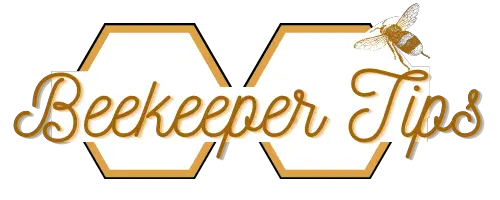The story of how Buckfast bees came to bee involves one of the greatest beekeeping legends of all time – Brother Adam – who lived in Buckfast Abbey. This legendary bee, like Brother Adam, is a larger-than-life bee – with a dark, and magical secret. Join us on an adventure through history while we learn of one of the greatest bee brands ever created.
Table of Contents
What Is Buckfast Abbey and Who Was Brother Adam?
Buckfast bees are a hybrid strain of bees bred by Brother Adam, a monk who lived and worked in Buckfast Abbey. Brother Adam is something of a legend. He was born in Germany in 1898 but had a health problem that forced his mother to send him to Buckfast Abbey where he lived, worked, and passed away aged 99.
Buckfast Abbey, a Benedictine monastery, was founded more than a millennium ago in Devon, England. The Abbey is on the edge of the Dartmoor.
When he arrived at the Abbey he was 11 years old – by the age of 17, he had developed an interest in bees. At the time he started beekeeping, the tracheal mite had just burst onto the beekeeping scene and was decimating hives throughout the UK. Being a bright and ambitious young man, he set about breeding bees. He traveled widely to areas where bees were not being badly affected by the tracheal mite and collected bees for breeding.
The Making Of A Legend
This led him to Turkey. By the age of 19, he had bred the first Buckfast bee, which was resistant to Tracheal mite. The brothers at the Abbey put him in charge of the apiary. Legend has it that at some point around about this time, he began to make mead as well and used to cool this in the icy streams around the apiary in Dartmoor.
Dartmoor is an area that is not ideally suited to beekeeping. In fact, if you had to choose anywhere on Earth to keep bees, Dartmoor would probably fit squarely in the middle of the list of worst places to keep bees. In short, if Brother Adam could get bees to live here they would thrive anywhere else.
The somewhat troubled but talented Austrian bee taxonomist, Friederich Ruttner, honored Brother Adam by naming Apis mellifera adami after him. This hard-working little bee is native to the Greek island of Crete.
The Establishment Of The Buckfast Bee
Brother Adam used the remote apiary infrastructure he created in Dartmoor to perform isolated breeding. The remoteness allowed him to control which hives produced drones, and which queens went on mating flights. This resulted in the B1 Buckfast strain. Over multiple decades he was able to collect genetic material from a wide number of regions and combine these into a relatively stable honeybee strain. The Buckfast Bee™ which has as its foundation the B1 strain is the final iteration of this process. Br. Adam traveled over 100 000 miles collecting and studying bees around the world.
Brother Adam traveled widely collecting various strains to breed into the Buckfast Bee™. These include Apis mellifera ligustica, A.m. mellifera, A.m.caucasica, A.m.lamarkii, A.m cypria, A.m.meda, A.m. anatoliaca, A.m.adami and A.m. macedonica. Noting the fecundity and health of African bees, he also sought African bee races to include in his master mix. He thus incorporated the North African Saharan bee – Apis mellifera sahariensis and East African A.m.monticola. This is a fascinating race found in the volcanic highlands of East Africa.
Protecting The Buckfast Bee™
The Buckfast Bee™ – note the trademark – is now regulated in its production methodology by the Federation of European Buckfast Beekeepers. A specific method is used to ensure that the Buckfast bee retains some fidelity to the original traits selected by Brother Adam.
The result is a bee which is exceptionally productive, disease-resistant, non-aggressive but still able to protect against robbing, and which is easy to work commercially. A commercially easy-to-work bee needs to not produce a lot of brace comb or propolis. When frames get stuck together by brace comb and propolis it slows the rate of beekeeping, and also results in broken frames. Buckfast bees are consequently easy bees to operate commercially.
Buckfast Bee™ Packages
The best way to try out some Buckfast Bees™ is to book and order a package. A number of excellent producers exist in the US. R. Weaver apiaries in Texas have been producing Buckfast Bees™ of high quality for decades. My recommendation would be to book a package here. Weavers are a tried and tested producer and they have their quality control dialed in properly.
R Weavers also produce buckfast queens, hence you can look at just buying queens and either doing your own splits or requeening. Book long in advance.
A Dark Secret
When Africanised bees arrived in the US a morphometric method was used to determine if bees were Africanized. From time to time, small pockets of African bees were found in areas where “Africanized” bees had not yet reached. It was theorized that these were actually Buckfast bees that had bred backward. This resulted in the African traits of the races from Africa becoming dominant. African bee queens hatch a bit earlier than European bees, so after a generation of two, African traits become dominant. Without careful maintenance of the Buckfast traits, this backward breeding happens.
I have personally worked with pure A.m.monticola and found these to be one of the most fascinating bee races I have ever seen. They are quite unlike most other African bees and have a beautiful color scheme. Friends of mine sampled Apis mellifera sahariensis and say that it is a truly amazing bee as well. Brother Adam must have had the greatest adventure sampling all these bees! Cheers to a legend.
We hope this article has helped you learn a bit about Buckfast bees and the great man who bred them. It is well worth making a batch of mead, and when you are out working your bees, do as Br. Adam did – place a bottle of sparkling mead in a cool stream. After you finish your work, open that bottle and say chears to bees and beekeepers!

Dr. Garth A. Cambray is a Canadian/South African entrepreneur and beekeeper with 28 years of experience in apiculture and specializes in adding value to honey. His Ph.D. research developed a new advanced continuous fermentation method for making mead that has resulted in a number of companies globally being able to access markets for mead. His company, Makana Meadery, exports honey mead to the USA where it is available to discerning connoisseurs. He has also developed technologies to commercially manufacture organic honey vinegar in Zambia for export globally. He holds a few patents globally in the ethanol industry and believes in technology and knowledge transfer for human development and environmental sustainability. One of his proudest achievements is the fact that the wind farm he started at one of his old apiary sites has essentially made his hometown carbon neutral.


